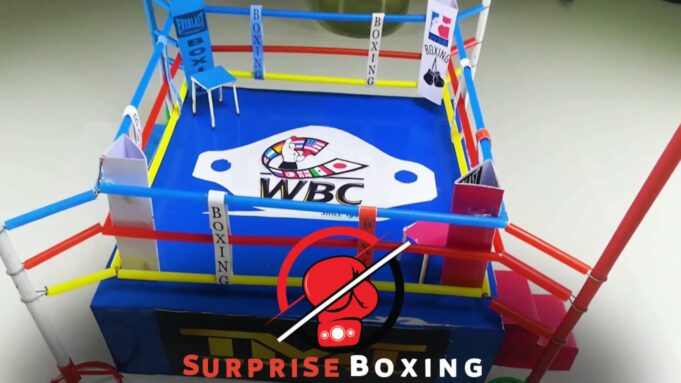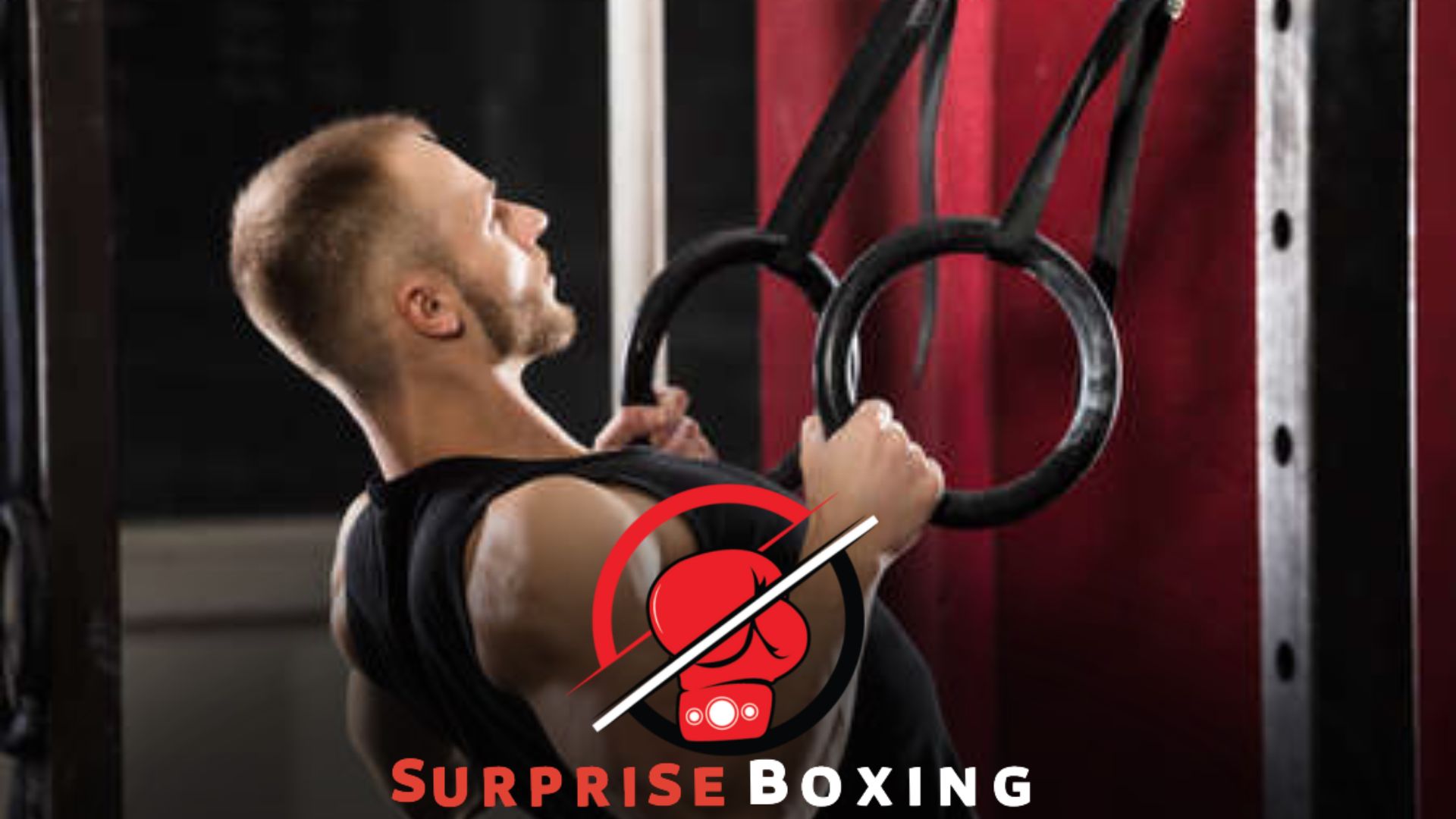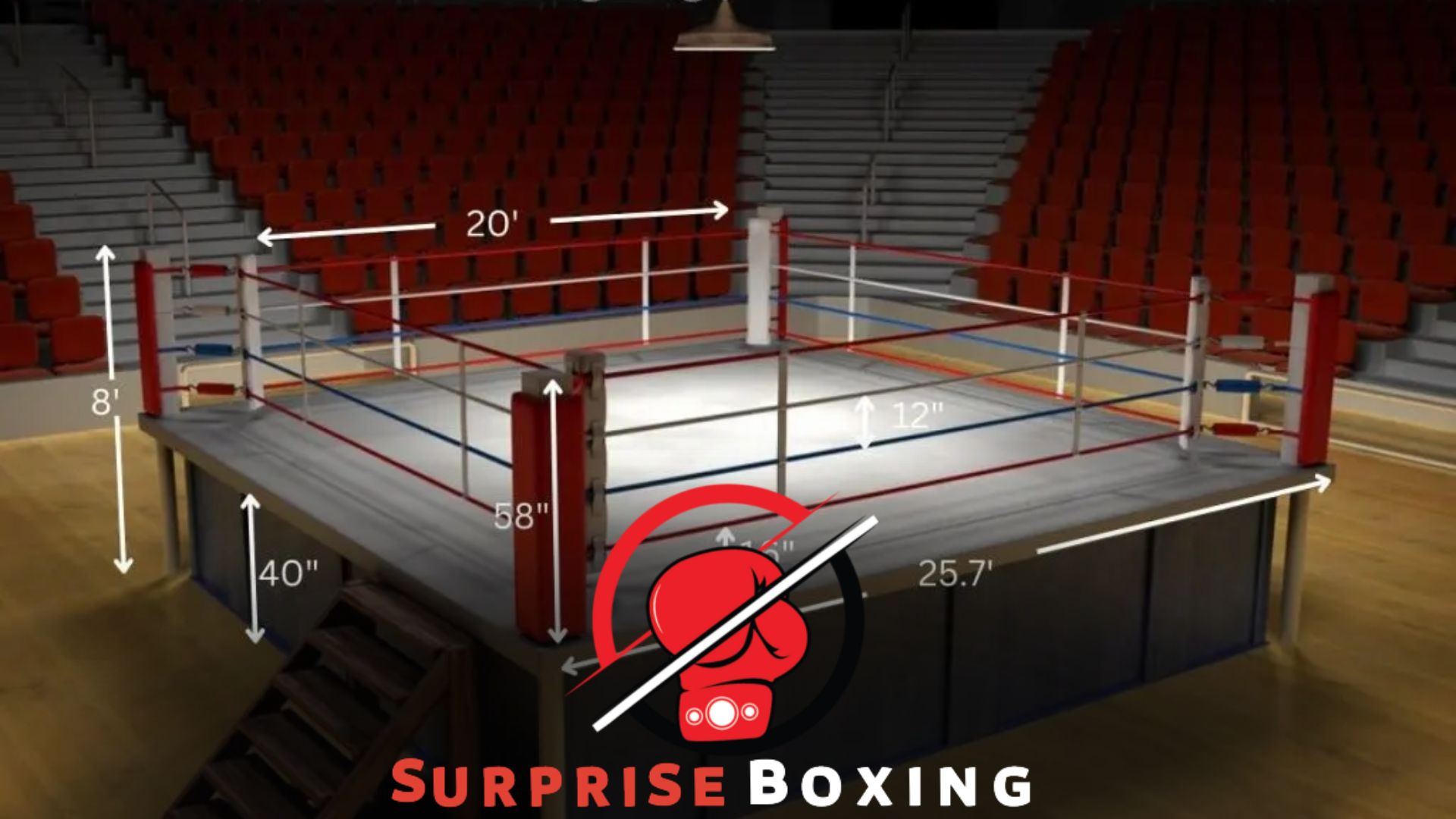To make a boxing ring at home, you need ample open space and the following materials: canvas, foam padding, plywood, ropes, turnbuckles, and a ladder. Start by measuring and marking out the dimensions of your boxing ring, then build the base using plywood and foam padding.
Next, attach the ropes to the corners using turnbuckles and secure them tightly. Finally, stretch the canvas over the base and strings, ensuring it is tight and secure. Now, you have your boxing ring that you can use for training or recreational purposes.
Planning Your Boxing Ring: Strategizing Space, Budget, and Materials for Your Home Fight Haven

Discover how to create your boxing ring at home by strategizing your space, budget, and materials. This article provides expert advice on planning and building a personalized fight haven for an optimal boxing experience.
Creating a boxing ring at home is an excellent way to stay fit and enjoy the sport from the comfort of your own space. Before you start building your call, it’s essential to plan strategically. This includes considering space availability, budget constraints, and necessary materials.
This section will guide you through the planning process, ensuring you are well-prepared to create your boxing haven.
Space Requirements
- Consider the available space in your home and choose an area that can accommodate the boxing ring.
- The ideal space for a boxing ring should be at least 15×15 feet, allowing enough room for the crew, equipment, and movement.
- Ensure the chosen space has an appropriate ceiling height to avoid any restrictions during training sessions.
Budget Constraints
- Determine your budget before embarking on the project, considering your financial limitations.
- Research the cost of materials needed, including the boxing ring base, canvas, ropes, turnbuckles, corner pads, and posts.
- Allocate a part of your budget for any additional equipment such as heavy bags, speed bags, and safety gear like gloves and headgear.
Selecting Materials
- Choose high-quality materials that ensure durability and provide a safe training environment.
- The boxing ring base should be sturdy plywood reinforced with solid wood beams beneath.
- Opt for a canvas made from high-density vinyl, known for its durability and resistance to wear and tear.
- Select sturdy ropes made of nylon or polypropylene, considering their strength and knot-holding capacity.
- Turnbuckles, corner pads, and posts should be crafted using steel for added strength and stability.
Safety Measures
- Prioritize safety when planning your home boxing ring.
- Ensure the chosen space has a non-slip flooring material to prevent accidents.
- Install proper lighting to maintain visibility during training sessions.
- Make sure there is sufficient ventilation to keep the air fresh and avoid overheating.
Structuring Your Training Space
- Remember that the location of your home boxing ring should allow for easy access and minimal disruption to other areas of your home.
- Consider installing mirrors on the walls nearby to observe and correct your technique during training.
- Set up your training area with additional equipment, such as punching bags, speed bags, and weights, to create a well-rounded workout space.
Planning your home boxing ring thoroughly will help create a functional and enjoyable space. Now that you have strategized the space, budget, and materials needed, it’s time to move on to the next step: building your boxing ring.
So, let’s get started on making your home fight haven a reality!
Designing Your Boxing Ring: Creating the Ultimate Fight Space At Home
Create the ultimate fight space at home by preparing your boxing ring. Follow these simple steps to make a boxing ring perfect for training and sparring in the comfort of your home.
So, you’ve decided to bring the excitement of boxing into your home. Creating a boxing ring in your space is not only a great way to stay fit, but it also adds a touch of authenticity to your training routine.
This section will explore the essential steps to design your home boxing ring, ensuring it becomes the ultimate fight space where you can unleash your inner warrior.
Considering the Space and Location
When designing your home boxing ring, the first step is to consider the available space and location carefully. Here are a few key points to keep in mind:
- Measure the area: Begin by measuring the space you have available. Depending on your needs, you will need enough room for the boxing ring and additional training equipment or seating areas.
- Location: Choose a space with adequate ventilation and lighting to ensure a comfortable and safe boxing environment.
- Flooring: The flooring should be sturdy and shock-absorbent to minimize the risk of injuries. Consider options like foam tiles, rubber flooring, or mats for combat sports.
Building the Boxing Ring
Now that you have decided on the space and location, let’s focus on building the boxing ring. Follow these steps to create a fantastic at-home boxing ring:
- Materials needed:
- Plywood or MDF boards: These will form the base and sides of the boxing ring.
- Ropes and turnbuckles: These are crucial for creating the boundaries of the ring.
- Foam padding: Essential for protecting the boxers during training sessions.
- Vinyl or canvas covering: Materials that cover the ring provide a durable, non-slip surface.
- Constructing the base:
- Begin by building a solid and stable base using plywood or MDF boards. Measure and cut them to the desired size of your boxing ring.
- Stack the boards to create a height suitable for your needs and secure them firmly together.
- Ensure the base is level to prevent any imbalances during training.
- Setting up the ropes and turnbuckles:
- Install corner posts securely at each corner of the base.
- Attach the strings to the corner posts, ensuring they are taut but not overly tight.
- Use turnbuckles to adjust the tension of the ropes as necessary.
- Adding foam padding and covering:
- Line the inside of the boxing ring with foam padding to protect the boxers from impact.
- Complete the construction by carefully attaching a vinyl or canvas over the foam padding.
Creating the Atmosphere
Consider the overall atmosphere and ambiance to transform your space into the ultimate fight zone. Pay attention to the following details:
- Lighting: Choose bright, focused lighting to ensure clear visibility within the boxing ring.
- Sound system: Install a good strategy to play motivational music or simulate the excitement of an actual boxing match. This will amplify your training experience.
- Seating area: Set up a comfortable seating area for spectators or for taking breaks between rounds.
By incorporating these elements into your home boxing ring, you can create a truly immersive experience that will enhance your training sessions and elevate your boxing skills. So, get ready to don your gloves and step into the boxing ring you designed!
Building the Boxing Ring Frame: Constructing the Foundation of Your Home Arena
Discover the art of building a sturdy, reliable boxing ring frame for your home arena. Unleash your boxing passion by constructing a solid foundation and following step-by-step instructions to create your boxing ring at home.
Building the boxing ring frame: constructing the foundation of your home arena
Are you a boxing enthusiast who wants to practice your skills at home? Creating a boxing ring may sound daunting, but with some guidance and elbow grease, you can have your home arena.
In this section, we will focus on building the boxing ring frame, which forms the foundation of your setup. By following these steps, you’ll be closer to having a professional boxing experience right in your home.
Selecting the Right Location: Finding the Perfect Spot
Finding the right location for your boxing ring is crucial. Here are some factors to consider when choosing the spot:
- Ensure you have enough space: Measure the area where you plan to build the ring and ensure it is sufficient to accommodate a standard-sized boxing ring. A good rule of thumb is to have at least 20 feet by 20 feet of space.
- Flat and level surface: The surface should be balanced to ensure stability and safety. Remove obstructions or uneven patches before proceeding.
- Adequate ceiling height: Check that the area has enough clearance vertically so that the ropes and corner posts won’t impede the movement of the boxers.
Gathering the Materials: What You’ll Need
Before you start constructing the frame of your boxing ring, gather the following materials:
- Four corner posts will serve as the primary support for the ring. Choose sturdy and durable posts that can withstand the impact of punches.
- Wooden planks or metal tubing: Use these to create the frame and support structure. Ensure they are strong enough to hold the weight of the boxers.
- Nails or bolts: These will be used to secure the wooden planks or metal tubing together.
- Measuring tape and level: These tools will help you ensure accuracy and precision during construction.
Building the Frame: Step-By-Step Guide
Now that you have the materials ready follow these steps to construct the frame of your boxing ring:
- Measure and mark the dimensions: Use the measuring tape to accurately keep the corner posts’ position. This will ensure that the ring is symmetrical and aligned.
- Install the corner posts: Attach each post securely to the floor, ensuring they are tightly anchored and stable.
- Connect the posts with the frame: Attach the wooden planks or metal tubing to the corner posts, forming the perimeter of the boxing ring.
- Reinforce the frame: Strengthen the structure by adding support along the sides and diagonals. This will provide stability and prevent any sagging or movement.
- Check for stability and safety: Double-check that the frame is secure and stable. Confirm that all connections are tight and have no sharp edges or protruding nails.
By following these steps, you’ve successfully built the frame of your boxing ring. Now it’s time to move on to the next phase, which involves adding the ropes and padding to complete your home boxing arena. Stay tuned for the next section on transforming your frame into a fully functional boxing ring.
Installing the Ropes and Turnbuckles: Securing the Heart of Your Home Boxing Ring
Ensure the stability of your DIY boxing ring by adequately installing the ropes and turnbuckles. Safeguard the heart of your home boxing arena with these essential steps.
Setting up the ropes and turnbuckles in your home boxing ring is crucial for safety and authenticity. These elements provide a boundary for the fighters and add an aesthetic appeal to your setup. In this section, we’ll walk you through installing the ropes and turnbuckles, ensuring you have a secure and professional-looking boxing ring right in your own home.
Installing the Ropes
- Measure and mark the desired height for your ropes on the corner posts. It’s important to follow standard boxing regulations for rope placement.
- Begin by securing the first rope loop to one corner post. Use a sturdy knot or a rope clamp to keep it in place.
- Stretch the rope tightly around the other corner posts, ensuring it is level and taut throughout the process.
- Once you reach the starting point, secure the rope with another knot or rope clamp.
- Repeat the process for the remaining ropes, ensuring all cords have equal tension. This will help maintain an even and balanced ring structure.
- Test the ropes by applying gentle pressure to ensure they are securely fastened and can withstand the boxing force.
Installing the Turnbuckles
- Attach one end of the turnbuckle to the corner post using screws or bolts, depending on the design of your boxing ring.
- Screw or bolt the other end of the turnbuckle to the corresponding side of the ring ropes, allowing for the adjustability of the rope tension.
- Repeat the process for each ring corner, ensuring all turnbuckles are securely attached.
- Once all the turnbuckles are in place, use a wrench or a turnbuckle tool to tighten or loosen them as needed. This will allow you to fine-tune the tension of the ropes.
- Regularly check the turnbuckles to remain tight and secure during training sessions.
Following these steps, you can install the ropes and turnbuckles in your home boxing ring, creating a safe and authentic environment for your boxing workouts or training sessions. Remember, the strings should be tight and well-aligned, while the turnbuckles should be properly installed and regularly inspected for necessary adjustments.
With these crucial elements secured, you’ll be ready to step into your boxing ring and train like a pro in the comfort of your home.
Padding and Canvas: Ensuring Comfort and Safety in Your Home Boxing Ring
Create a safe and comfortable home boxing ring by incorporating padding and canvas. Ensure maximum comfort and safety during your boxing workouts with these essential elements.
When setting up your home boxing ring, you should not overlook the padding and canvas. Providing adequate padding and a high-quality canvas is essential for comfort and safety during your boxing sessions.
To ensure you create a space that is conducive to a great boxing experience, follow these tips:
Thickness Matters: Choose the Right Padding
- Opt for padding at least 2 inches thick to provide sufficient cushioning for punches and falls.
- Look for foam padding that is firm enough to absorb impact but still comfortable to land on.
- Consider using multiple layers of padding for added protection.
Wrap it Up: Secure the Padding
- Double-check that the padding is securely wrapped around the edges of the boxing ring.
- Use durable, high-quality tape to hold the padding and prevent any potential unraveling during intense boxing sessions.
- Inspect the padding regularly to ensure it is still in place and adequately protecting the edges.
Canvas Selection: Durability and Grip
- Choose a canvas material that is durable, tear-resistant, and can withstand repeated use.
- Look for canvas with a non-slip surface to provide a better grip for boxers.
- Ensure the canvas is securely fastened to the boxing ring to prevent shifting or bunching during training.
Maintenance is Key: Keep it Clean and Hygienic
- Regularly clean the padding and canvas to maintain their integrity and prevent the buildup of sweat, dirt, and odor.
- Use a mild cleaning solution and gentle scrubbing to avoid damaging the padding and canvas.
- Allow sufficient drying time before using the boxing ring again to prevent moisture accumulation.
Safety First: Inspect for Any Damage
- Regularly inspect the padding and canvas for signs of wear and tear, such as rips, tears, or loose edges.
- Replace any damaged padding or canvas immediately to ensure the safety of all individuals using the boxing ring.
- Never compromise on safety when repairing or replacing any worn-out ring parts.
Remember, the key to an enjoyable and safe home boxing experience lies in the quality of the padding and canvas you choose. By prioritizing comfort, grip, and maintenance, you can create a boxing ring that offers a professional training environment within the comforts of your home.
Corner Pads and Ring Posts: Enhancing Safety and Authenticity in Your Home Boxing Ring
Enhance safety and authenticity in your home boxing ring with corner pads and ring posts. Create a DIY boxing ring that provides a professional and secure environment for your training sessions.
To create a genuinely immersive and safe boxing experience at home, including corner pads and ring posts is essential. Not only do these elements enhance the authenticity of your home boxing ring, but they also play a crucial role in ensuring the safety of the participants.
Let’s dive into the details:
Corner Pads
- Padding for protection: Corner pads provide essential cushioning for boxers during the intense moments of a fight. These padded corners help reduce the impact force and absorb energy, minimizing the risk of injuries.
- Safety measures: By covering the hard edges of the corners, corner pads create a safer environment by preventing accidental cuts or bruises. They act as a safeguard against impact on the ring’s structure.
- Enhancing authenticity: Corner pads are functional and contribute to the overall aesthetics of your home boxing ring. They add a professional touch, making your setup visually appealing and replicating the look and feel of a real boxing arena.
Ring Posts
- Stability and support: Ring posts serve as the main support structure for the entire boxing ring. They provide stability and prevent the ring from shifting or collapsing during intense action. Properly secured ring posts are crucial for the safety of the fighters.
- Durability and strength: High-quality ring posts are designed to withstand the physical demands of boxing, ensuring they remain intact during intense training sessions or bouts. Sturdy and well-built ring posts guarantee a safe and long-lasting setup.
- Authenticity and professionalism: Ring posts are a defining feature of any boxing ring, and including them in your home setup adds to the authenticity and professional look of the space. They are also essential for attaching ropes that define the boundaries of the ring.
By incorporating corner pads and ring posts into your home boxing ring, you prioritize the participants’ safety and create a visually authentic experience. These elements enhance the ring’s physical integrity and overall aesthetics, allowing you to enjoy a professional boxing atmosphere in the comfort of your home.
Safety Measures: Ensuring a Secure and Injury-Free Boxing Experience
Achieve a safe and injury-free boxing experience by following proper safety measures. Learn how to create a boxing ring at home and ensure a secure environment for your training sessions.
Boxing is an intense sport requiring skill and caution to ensure a safe environment. Whether you’re setting up a boxing ring in your garage or backyard, following safety measures to avoid injuries is crucial. You can enjoy a secure and injury-free boxing experience by taking the necessary precautions.
Setting Up a Safe Boxing Ring
- Choose an open and well-ventilated area to set up your boxing ring.
- The space should provide enough room for movement and be clear of any obstacles that could pose a risk.
- Install foam or padded flooring to minimize impact on athletes’ joints and reduce the risk of injuries due to falls.
- Ensure that the ring ropes are securely fastened and properly tensioned. This will prevent them from snapping or becoming loose during intense training or fights.
- Place corner pads on each turnbuckle to cover any sharp edges and minimize the impact of accidental collisions.
Investing in Proper Protective Gear
- Prioritize the use of high-quality boxing gloves that are fitted and comfortable.
- Appropriate gloves protect the hitter and the target, reducing the risk of hand injuries and blunt force trauma.
- Mouthguards are a must in boxing to protect the teeth and jaw from impact. Ensure that the mouthguard fits well and provides proper support.
- Headgear is recommended, especially in sparring sessions, to reduce the risk of head injuries and concussions. Choose headgear that offers adequate padding and protection.
- Groin protectors are essential to safeguard against low blows and potential injuries to sensitive areas. Make sure the groin protector fits snugly and is worn correctly.
Enforcing Safety Rules
- Before any training or match, ensure that all participants know the rules and regulations of boxing.
- This includes understanding the importance of sportsmanship and avoiding dangerous moves that could cause harm.
Providing Proper Training and Supervision
- It is essential to have a qualified coach or trainer who can guide participants in proper boxing techniques and ensure safety measures are followed.
- Supervise all boxing sessions to ensure that athletes practice with proper form and technique, reducing the risk of injuries caused by poor execution.
Regular Maintenance and Inspection
- Routinely inspect the boxing ring, ropes, and equipment for any signs of wear and tear.
- Replace or repair any damaged components to maintain a safe training environment.
- Clean and disinfect the boxing ring and gloves regularly to minimize the risk of infections or skin conditions among participants.
By implementing these safety measures, you can create a secure and injury-free environment for your boxing endeavors. Remember, the well-being of participants should always be the top priority. So, lace up your gloves, follow the rules, and enjoy a thrilling and safe boxing experience in your home!
Personalizing Your Boxing Ring: Adding Your Unique Touch To the Ultimate Fight Space
Transform your home into a personalized boxing ring with these simple tips. Add your unique touch to create the ultimate fight space that reflects your style and personality.
When it comes to personalizing your boxing ring, there are numerous ways to add your unique touch. By incorporating your style and preferences, you can create a space that reflects your personality.
Here are some ideas to help you add that extra flair to your ultimate fight space:
- Customization: Consider customizing your boxing ring by incorporating personalized logos, colors, or designs. This can be achieved through custom ring canvas, corner pads, or ropes. Adding your branding not only gives your ring a unique look but also adds a professional touch.
- Lighting: The proper lighting can significantly enhance the atmosphere of your boxing ring. You can opt for colored lights to create a dramatic effect or install spotlights to focus attention on the call. Experimenting with different lighting techniques can elevate the overall ambiance of your fight space.
- Artwork and murals: Transform the walls surrounding your boxing ring into a gallery of paintings or murals. Choose designs that inspire you or depict your favorite boxing legends. Not only does this add visual interest, but it also reflects your passion for the sport.
- Sound system: A powerful sound system can make a massive difference in the energy in your boxing ring. Install speakers strategically to ensure the audio reaches every corner of the space. Playing motivational music or crowd noises can further enhance the immersive experience.
- Equipment display: Showcase your boxing equipment in an organized and visually appealing manner. Install wall-mounted racks or shelves to display your gloves, punching bags, and other gear. Not only does this create a professional look, but it also serves as a convenient storage solution.
- Comfortable seating: Don’t forget about providing comfortable seating for spectators or training partners. Add benches or chairs around the ring to accommodate those watching and cheering you on during your bouts. Opt for cushioned seats to ensure everyone’s comfort.
- Motivational quotes: Incorporate motivational quotes or phrases throughout your boxing ring area. Paint them on the walls or hang artwork that inspires you. These positive affirmations can help boost confidence and create a motivating environment.
- Designated training space: If you have enough space, consider including a designated area for training outside the boxing ring. This can be an area for stretching, shadowboxing, or other exercises. Create a separate space that complements the overall aesthetic and allows for a well-rounded workout experience.
Personalizing your boxing ring is about expressing your individuality and creating an environment that fuels your passion for the sport. Get creative with the abovementioned elements, and let your unique touch shine through.
Utilizing Your Home Boxing Ring: Training Routines, Workouts, and Beyond
Discover the ultimate guide to creating your home boxing ring. This article provides everything you need to know to maximize your boxing experience, from training routines to workouts.
Ready to take your boxing skills to the next level? With your very own home boxing ring, the possibilities are endless. From training routines to intense workouts, your boxing ring will become your ultimate fitness sanctuary.
Let’s explore some key ways you can make the most of your home boxing ring:
Training Routines
- Shadowboxing: Use your home boxing ring for shadowboxing sessions, focusing on perfecting your technique and footwork.
- Bag work: Hang a punching bag in your home boxing ring and incorporate it into your training routine for a full-body workout.
- Speed and agility drills: Set up cones or hurdles to improve your speed and agility skills, enhancing your overall boxing performance.
- Cardiovascular conditioning: Utilize your home boxing ring for high-intensity cardio workouts, such as skipping rope or sprinting.
Workouts
- Circuit training: Create a circuit within your boxing ring, alternating between boxing drills and bodyweight exercises. This will challenge your endurance and strength simultaneously.
- Strength training: Set up workout stations around your home boxing ring to focus on specific muscle groups. Incorporate exercises like push-ups, squats, and burpees for a well-rounded workout.
- Partner workouts: Invite a training partner to join you and engage in partner drills such as pad work, sparring, or defensive drills, improving your coordination and reaction time.
- Core and stability exercises: Utilize your home boxing ring to perform core-strengthening exercises like planks, Russian twists, and medicine ball throws.
Beyond The Ring
- Goal setting: Use your home boxing ring as a space to set goals, jot down progress, and visualize your success. Create a motivational corner with quotes or images to keep you driven.
- Meditation and visualization: After intense training sessions in your home boxing ring, take a moment to relax and visualize your upcoming bouts or future achievements.
- Self-reflection: Dedicate some time in your boxing ring for self-reflection and analysis of your training sessions. Take note of areas for improvement and areas of strength.
- Recovery and relaxation: Turn your boxing ring into a recovery space by incorporating foam rolling, yoga, or stretching sessions to promote flexibility and peace.
Maximize your home boxing ring’s potential by incorporating these training routines, workouts, and additional activities. Remember, consistent practice with proper technique will help you improve, and soon enough, you’ll be punching your way to victory!

Frequently Asked Questions of How To Make a Boxing Ring At Home
Can I Make a Boxing Ring At Home?
You can create a boxing ring at home with a few essential materials, including ropes, corner pads, and a boxing mat. Follow specific measurements and safety guidelines to ensure a proper setup and minimize the risk of injuries during training sessions.
What Size Should a Home Boxing Ring Be?
A standard home boxing ring is typically around 12 feet by 12 feet in size. This size provides enough space for fighters to move around and practice their techniques effectively. However, you can adjust the dimensions based on the available space you have in your home.
How Can I Build a Boxing Ring on a Budget?
If you’re on a budget, several cost-effective methods exist to build a boxing ring at home. You can use materials like pvc pipes and foam mats instead of professional boxing ring components. Additionally, consider purchasing used equipment or repurposing items to save money without compromising safety.
Conclusion
Creating a boxing ring at home is a fantastic way to train and stay fit. Whether you’re an amateur enthusiast or a professional boxer, having a dedicated space to practice can make a difference in your training routine.
By following the steps outlined in this guide, you can transform any area into your boxing ring. Remember to carefully choose the suitable materials, measure and mark the space, and secure the necessary equipment. Safety should be a top priority, so adequately pad and cover the ring area.
Adding finishing touches like ropes and corner pads will give your homemade ring an authentic look and feel. With a home boxing ring, you can enjoy the convenience and flexibility of training on your terms. So, get started today and take your boxing skills to the next level in your home.














